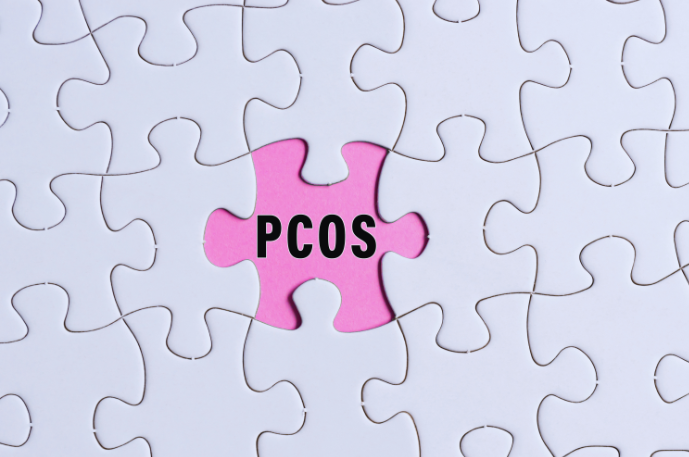Polycystic ovarian syndrome and endometriosis are common disorders that are known to individually affect a woman’s overall health and a couple’s fertility. Research has confirmed the coexistence of endometriosis, PCOS, and infertility, which is of significant clinical importance.
Initial Understanding of Polycystic Ovarian Syndrome and Endometriosis
Polycystic ovarian syndrome (“PCOS”) is one of the most common reproductive disorders affecting up to 13% of reproductive-age women – with an astounding 70% of PCOS cases going undiagnosed.
The diagnosis of PCOS is based on the confirmation of any two of the following findings – (1) ovulatory dysfunction, (2) androgen excess, and (3) polycystic ovaries on ultrasound.
It is well established that women with PCOS have a higher risk of infertility and reproductive disorders including miscarriage. In fact, PCOS causes anovulatory infertility (the inability to ovulate) in 70% of women.
Similarly, endometriosis is a condition also well-known for its negative impact on reproductive health.
Endometriosis is an inflammatory, hormone-dependent disorder characterized by the presence of endometrial-like tissue located outside of the uterine cavity. This condition has been estimated to impact roughly 10% of reproductive-age women (190 million globally) and is a known cause of infertility.
In addition, recent studies have also clearly established endometriosis as a risk factor for miscarriage.
Given the similarities with respect to PCOS and endometriosis – and their prevalence in women dealing with reproductive concerns – the natural question arises as to whether or not these two disorders coexist in the same woman.
Initial thinking was that such an association would not be expected.
This rationale was based largely on the presence of long and irregular cycles seen in women with PCOS resulting in hormonal-under stimulation of the pelvic tissues.
Accordingly, it was thought the presence of endometriosis in these women would be lower given the disease is one that is hormonally-responsive in nature.
In addition, anovulation, which is a common finding in women with PCOS is not often seen in women diagnosed with endometriosis.
Thus, for quite some time women with PCOS have generally been thought of as having a lower risk for endometriosis.
Link Between PCOS, Endometriosis, and Infertility Identified
In general, few studies have focused on a link between endometriosis and PCOS.
This is largely due to the fact that in order to clearly determine if an association between PCOS and endometriosis exists – a specific type of investigation is necessary.
This is due to the fact that endometriosis can only be diagnosed via a specialized-surgical evaluation that includes the placement of a small camera into the female abdomen and pelvis called a laparoscopy.
With the aid of the laparoscopic camera, a surgeon experienced in the identification of endometriosis is able to visualize the presence of the disease within a given individual. And only through this evaluation can a woman be definitely diagnosed with endometriosis.
This type of study was performed by Thomas W. Hilgers, MD and the results were published in the 2004 textbook “The Medical and Surgical Practice of NaProTECHNOLOGY.”
Specifically, the study revealed an association between women with PCOS and endometriosis and clearly indicated that these two conditions can coexist within the same woman. In addition, it is important to note the women evaluated also had infertility.
The study evaluated surgically over fifty women diagnosed with PCOS and infertility for endometriosis.
And contrary to the current thinking, the study discovered a significant link between endometriosis and PCOS. In fact, 50.9% of women with both PCOS and infertility were found to have endometriosis – significantly higher than that of the general population.
Further Research Confirms Association
A 2014 study by Holoch et al. further confirmed the association between PCOS, endometriosis, and infertility identified by Thomas W. Hilgers, MD in The Medical and Surgical Practice of NaProTECHNOLOGY.
The authors evaluated nearly 100 women with PCOS, infertility and/or pelvic pain laparoscopically for endometriosis.
The study found a 74% incidence of suspected endometriosis at the time of laparoscopic evaluation in women with PCOS. And of these PCOS patients diagnosed with endometriosis 76% had Stage I or II endometriosis according to the revised American Society for Reproductive Medicine (“ASRM”) criteria.
The ASRM classification utilizes a point-based system to divide endometriosis into four stages based largely on the number of endometriosis lesions identified along with their depth of penetration with Stage (I) being minimal; Stage (II) mild; Stage (III) moderate; and Stage (IV) severe.
It is important to note that the stage of endometriosis does not always correlate with the impact the disease may have on an individual woman, her female health, and her fertility.
For example, a woman could be diagnosed with Stage (I) minimal endometriosis, but also suffer from infertility or recurrent miscarriage as a result of the disease. Thus, while the endometriosis disease burden may be low, the individual impact in these cases can be quite high, requiring each case of endometriosis to be uniquely individualized.
According to Holoch et al., when laparoscopy was performed for infertility and/or pelvic pain in women known to have PCOS endometriosis lesions were commonly found. In addition, the authors found this association to be significantly higher when compared to women with normal fertility also undergoing an identical laparoscopic evaluation for endometriosis.
In conclusion, the authors stated:
“[O]ur findings support the hypothesis that PCOS and endometriosis coexist in a population of women with infertility, dysmenorrhea and chronic pelvic pain . . . [and] [t]these findings will hopefully bring this association to the attention of practitioners as a topic of clinical significance.”
“We also believe that women with PCOS, infertility, and/or chronic pelvic pain who fail to conceive once ovulation is restored should be offered laparoscopy to investigate the possibility of [the] coexistence of endometriosis . . .”.
True Health Matters Summary
PCOS and endometriosis are common disorders that are known to individually impact a woman’s overall health and a couple’s fertility. Initially thought of as largely separate disorders, research has clearly identified the coexistence of PCOS and endometriosis in women with infertility, and/or pelvic pain. Such a relationship is important to appreciate in couples undergoing infertility evaluation and in women with PCOS suffering from pelvic pain.
Click for References
[1] Endometriosis. World Health Organization. Updated March 24, 2023. Accessed October 5, 2023. https://www.who.int/news-room/fact-sheets/detail/endometriosis
[ 2] Hilgers, T. W. The Medical & Surgical Practice of NaProTECHNOLOGY. Omaha, Nebraska: Pope Paul VI Institute Press; 2004.
[3] Holoch KJ, Savaris RF, Forstein DA, et al. Coexistence of Polycystic Ovary Syndrome and Endometriosis in Women with Infertility. Journal of Endometriosis and Pelvic Pain Disorders. 2014;6(2):79-83. doi:10.5301/je.5000181
[4] Neven ACH, Laven J, Teede HJ, Boyle JA. A Summary on Polycystic Ovary Syndrome: Diagnostic Criteria, Prevalence, Clinical Manifestations, and Management According to the Latest International Guidelines. Semin Reprod Med. 2018 Jan;36(1):5-12. doi: 10.1055/s-0038-1668085. Epub 2018 Sep 6. PMID: 30189445.
[5] Polycystic Ovarian syndrome. World Health Organization. Updated June 28, 2023. Accessed October 5, 2023. https://www.who.int/news-room/fact-sheets/detail/polycystic-ovary-syndrome
[6] Sadeghi MR. Polycystic Ovarian Syndrome and Endometriosis as Two Evil Extremes of Health Continuum. J Reprod Infertil. 2022 Jan-Mar;23(1):1-2. doi: 10.18502/jri.v23i1.8445. PMID: 36045878; PMCID: PMC9361725.


